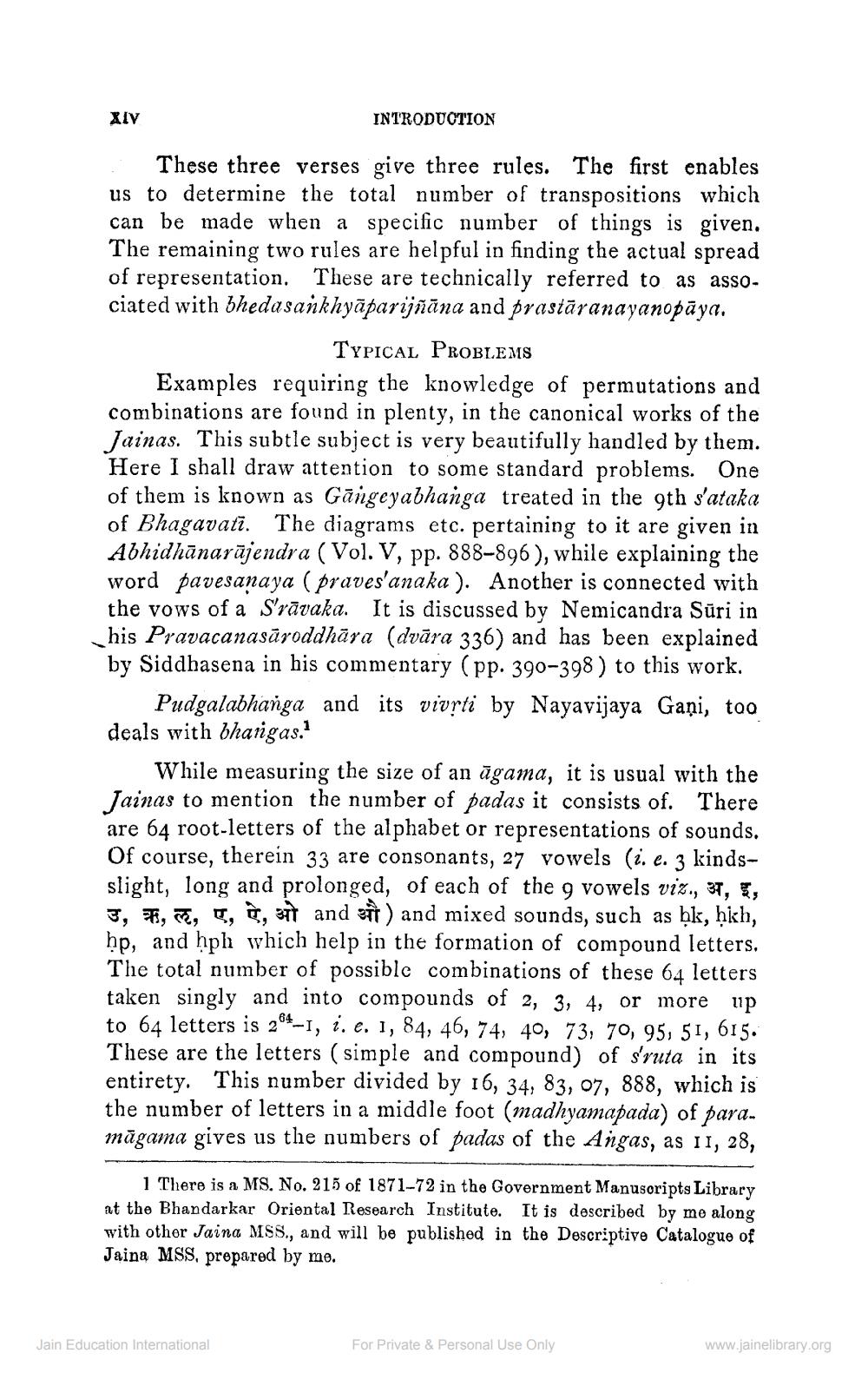________________
XIV
INTRODUCTION
These three verses give three rules. The first enables us to determine the total number of transpositions which can be made when a specific number of things is given. The remaining two rules are helpful in finding the actual spread of representation. These are technically referred to as asso. ciated with bhedasankhyāparijñāna and prastāranayanopāya.
TYPICAL PROBLEMS Examples requiring the knowledge of permutations and combinations are found in plenty, in the canonical works of the Jainas. This subtle subject is very beautifully handled by them. Here I shall draw attention to some standard problems. One of them is known as Gāngeyabhanga treated in the 9th s'ataka of Bhagavatī. The diagrams etc. pertaining to it are given in Abhidhānarājendra ( Vol. V, pp. 888–896), while explaining the word pavesanaya ( praves'anaka). Another is connected with the vows of a Srāvaka. It is discussed by Nemicandra Sūri in his Pravacanasāroddhāra (dvāra 336) and has been explained by Siddhasena in his commentary (pp. 390-398 ) to this work.
Pudgalabhanga and its vivrti by Nayavijaya Gani, too deals with bhangas.'
While measuring the size of an āgama, it is usual with the Jainas to mention the number of padas it consists of. There are 64 root-letters of the alphabet or representations of sounds. Of course, therein 33 are consonants, 27 vowels (i. e. 3 kindsslight, long and prolonged, of each of the 9 vowels viz., 37, ?, 3, #,, 5, 9, 37 and sit) and mixed sounds, such as hk, ḥkh, hp, and hph which help in the formation of compound letters. The total number of possible combinations of these 64 letters taken singly and into compounds of 2, 3, 4, or more up to 64 letters is 204-1, 1. e. 1, 84, 46, 74, 40, 73, 70, 95, 51, 615. These are the letters ( simple and compound) of s'ruta in its entirety. This number divided by 16, 34, 83, 07, 888, which is the number of letters in a middle foot (madhyamapada) of para. māgama gives us the numbers of padas of the Angas, as 11, 28,
1 There is a MS. No. 215 of 1871-72 in the Government Manuscripts Library at the Bhandarkar Oriental Research Institute. It is described by me along with other Jaina MSS., and will be published in the Descriptive Catalogue of Jaina MSS, prepared by me.
Jain Education International
For Private & Personal Use Only
www.jainelibrary.org




